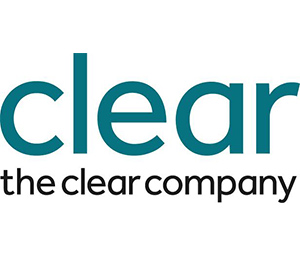The Diverse Corporate Directors Coalition (DCDC) members are urging corporate America to take more action to increase diversity, equity and inclusion (DE&I) in the boardroom.
DCDC coalition members – all leading associations that support diverse corporate directors – have also outlined a holistic plan to help corporate America increase diverse representation on their boards. The coalition includes Ascend Pinnacle, the Black Corporate Directors Conference (BCDC), the Latino Corporate Directors Association (LCDA), Out Leadership’s Quorum, and the WomenCorporateDirectors Foundation (WCD).
According to the members, current events have laid bare the long-held need for diverse teams and leaders who serve as an advantage in navigating the next normal. The pandemic has highlighted the disproportionate impact on the lives of people of colour. The resulting social unrest is also calling for an end to systemic racism and inequality. Ensuring equitable investment, opportunity, and advancement that are free of racism, bias and exclusion are not only good for society, but the economy and business performance.
DCDC members believe that current times call for proactive, vigilant leadership working toward achieving comprehensive and measurable results. Companies and their directors should expect more scrutiny from investors, proxy advisory firms, the public, and employees. Investors are beginning to pressure companies on these issues, calling on corporate directors for concrete, comprehensive solutions to end systemic racism and exclusion. Additionally, customer loyalty is heavily weighted by a company’s response to current events and social unrest.

SUPPLY NOT THE ISSUE
Supply is not the issue, confirm members of the coalition. “The combined membership of our organisations demonstrates that there is ample supply of diverse experienced directors and board-qualified executives,” they point out. “DCDC members represent the most respected and accomplished business leaders at the pinnacle of corporate governance; therefore, we are paying it forward by preparing and opening doors for experienced C-level executives.”
The coalition was formed to accelerate change because members still find progress towards more diverse boards is too slow, despite the growing business case for it. Companies already know that DE&I makes good business sense, point out DCDC members. “A growing body of research has demonstrated the correlation between board diversity and corporate financial performance,” according to the member organisations. For example, according to the 2018 McKinsey report Delivering Through Diversity, companies in the top quartile for ethnic diversity were 43% more likely to see above-average profitability.”
CALL TO ACTION
Companies that commit to change and measure results are more likely to achieve it, highlight DCDC members. In 2017, DCDC urged companies to establish a commitment to board equity in their governance guidelines. Now together the members are providing a holistic action plan for boards to guide companies create meaningful change in their boardrooms, as outlined below.
1. Policy
We ask board members to embed strong measures in their company’s governance policies reflecting a commitment to DE&I, including the following:
Create a Governance Guideline: For example – We establish, refresh, and actively work to achieve board equity goals with respect to race, ethnicity, gender, sexual orientation, and other aspects of diversity in the context of company strategy and stakeholder expectations.
Define Diversity: As part of this policy, the board of directors should adopt an inclusive definition of board diversity, to encompass gender, race, ethnic subgroups (Latino, Pan-Asian and Pacific Islanders, Native Americans, Alaskan, and Hawaiian Natives), LGBT+, disability, and veteran status.
Disclose: Reporting and disclosure enables accountability as a path toward achieving inclusive diversity. After all, what gets measured gets results. Ensure to disclose the board’s composition, based on the self-identity factors listed above, and other applicable SEC filings.
Report by Subgroup: To ensure best practice, companies should consider posting the demographic composition of their boardroom on their websites, with data disaggregated by gender, Black, Latino, Pan-Asian and Pacific Islanders, Native Americans, Alaskan and Hawaiian Natives, LGBT+, disability, and veteran status.
Track: The DCDC Coalition will join with partners and alliances to track and report on the progress of all public companies. It also calls on boards to track their own diversity against their goals and against relevant comparators, such as the company’s peer group, industry and all public companies.

2. Practice
DCDC urges all corporate boards to work to reflect the strength of America’s diversity, as a competitive advantage, with at least 50% of the board’s directors coming from under-represented groups. While each board will have its own unique board composition goals and recruiting preferences to achieve equity, it provides a number of techniques that have been used successfully by companies. They include:
Utilise an Updated Rooney Rule: Adopt an “updated Rooney Rule”, which states that 50% of director candidates interviewed should be diverse, with a significant portion selected to include members of underrepresented subgroups that are not currently present on the board. This is not a quota; it is a call for corporate boards to open the door and give diverse candidates a chance to compete.
Diversify All-white Boards: For boards that are composed of all-White men and women, nominating/governance committees should ask for a candidate pool that is 100% racially and ethnically diverse.
De-Bias the Search Criteria: There is ample diverse talent that is board-qualified. Examine routinely-used search terms that are unnecessary and exclusionary, for example, the search criteria for every single board seat need not require that the candidate be a CEO, COO, or CFO – candidates who have been CHRO or in other C-suite roles, or come from different backgrounds such as government or the military, can bring valuable perspectives as well as diversity to the board discussion.
Tap into the Ample Supply: Set expectations with search firms upfront. Be prepared to move your business away from recruiters who don’t deliver a candidate pool that is sufficiently ethnically and racially diverse. Whether or not a recruiter is involved, be sure to leverage resources with access to diverse networks and databases, as well as DCDC member organisations.
Evaluate and Improve: Incorporate effectiveness of diversity-related practices (as well as policies and results) into the board evaluation and continuous improvement processes.
3. Accountability and Impact
Statements are not enough. Companies and directors should expect more pressure from shareholders, the community, customers, and employees to achieve tangible change not only in the boardroom but in organisations and society as a whole. It is important for all corporate directors to be part of the solution, to speak up, ask the tough questions, expect progress, and create accountability for results.
Assess Talent Pipeline Plans: Board members should inspire companies to set aggressive and comprehensive plans to achieve measurable equity at all levels of the organization. Directors should ask questions, such as: What does your talent pipeline plan need to look like to reach equitable levels over a reasonable period of time? What planning must you do NOW to reach those targets? What new investments will the company need to make and what will it need to do differently?
Encourage Inclusive Purchasing: Diverse business purchasing practices benefit the company’s reputation as well as society — when companies do business with firms owned by under- represented groups. Boards can encourage these programs and ask questions such as: What was the total spend for products and services allocated to diverse vendors, by category of vendor and by category of under-represented group? What plans does the company have in place to support and measure continuous improvement of inclusive business purchasing?
Discuss Community Investment: Assess the company’s engagement and investment in initiatives aimed at stamping out racism and exclusion. Engage employees to understand what organisations they would like supported. Be authentic.
Assess Culture: Promote honest assessments, by external parties as appropriate, of company culture, workforce policies, purchasing practices, and community investment. Look for systemic trends and ensure corrective strategies have been implemented. Ask to see the data, by gender, race, ethnic subgroup, sexual orientation, and gender identity, at each level of the organisation, and track trends including hiring, retention, and promotion.
Reward Results: Establish KPIs and use compensation and other applicable tools to reward success and drive improvement.
ACCEPTING ACCOUNTABILITY
Now is the time for companies to demonstrate their commitment to diversity, equity, and inclusion by accepting accountability and taking positive action. The recommendations in this Call to Action will enable companies to move forward and accomplish meaningful change that supports business performance.
Check out the article on how the LCDA is planning triple Latino representation on their boards by 2023 below.







































